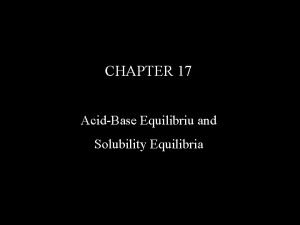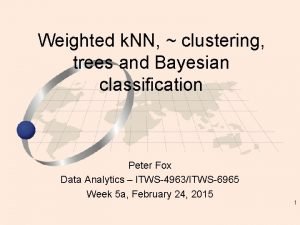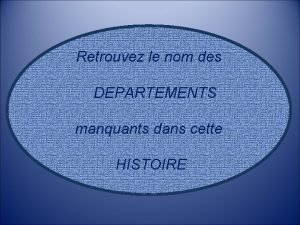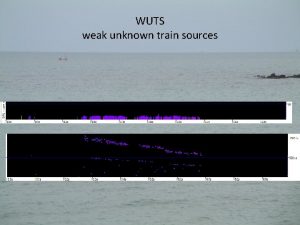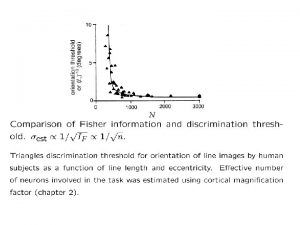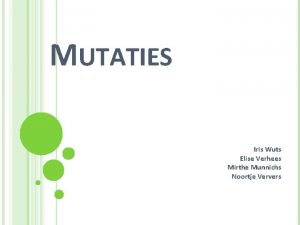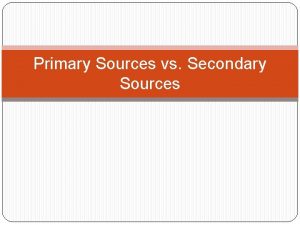WUTS weak unknown train sources WUTS weak unknown










- Slides: 10

WUTS weak unknown train sources

WUTS weak unknown train sources These weak trains were first spotted in data from rias in the SW of England. They were then seen in data from mangrove swamps in Australia, in the Gulf of California, the Gulf of Maine, the Gulf of Alaska, the Baltic Sea and other places. In most locations they are rare.

WUTS v NBHF trains WUTS NBHF train 1. AMPLITUDE always < 100, often <50 any 2. amplitude envelope usually nearly flat usually rounded 3. amplitude trend reversals many few 4. MULTIPATH very little or none often present 5. CONTEXT 2 minutes before and after usually no other WUTS usually train fragments or trains 6. CLICK RATE often very high, rarely < 40/s usually < 100/s 7. click rate modulation very smooth sweeps, usually monotonic less smooth sweeps, with multiple trend changes 8. FREQUENCY maybe centred around 80 k. Hz and 120 k. Hz centred around 130 k. Hz, range 107 - 155 k. Hz 9. BANDWIDTH few clicks have minimum bandwidth many clicks have minimum bandwidth 10. CLICK DURATION usually < 7 cycles often > 7 cycles Problem: none of these criteria are strongly discriminatory! In the Gulf of Alaska the KERNO classifier is inadequate because of the WUTS. The F-POD should help - more detailed features, and full waveform capture.

A very difficult one:

Modal frequencies vary, with possibly some clusters around 160, 124, and 80 k. Hz. Do these indicated different species? Smooth click rate sweeps are typical and were the first feature to reveal WUTS. These sweeps can start as high as 7000 clicks/s and are then only seen in the CP 1 file as the train detection does not go that high.




These show unusually complex patterns of click rate modulation:

• At present WUTS have only been identified in POD data. • They must exist in the data from studies collecting. wav files, but evade all detection algorithms because they are weak … • except for train detection. They are commonly seen as high quality trains. • Please send any examples or queries to team@chelonia. co. uk the end




